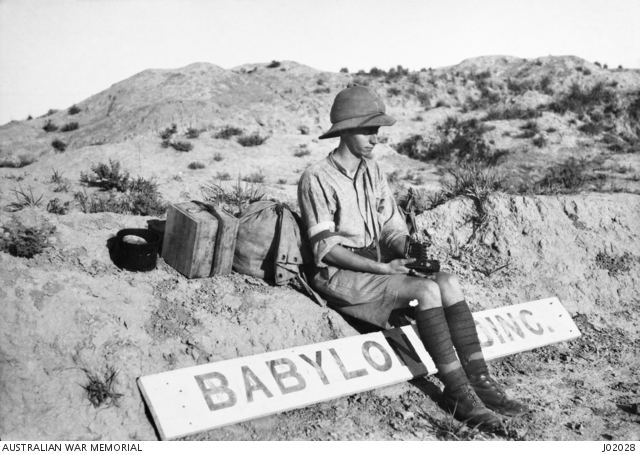Name Eric Burke | Role Journalist | |
 | ||
Died March 31, 1974, Concord, Sydney, Australia | ||
Eric Keast Burke (16 January 1896 – 31 March 1974) was a New Zealand-born photographer and journalist.
Contents
Early life and education
Burke was born at Christchurch, New Zealand. He was the only child of Walter Ernest Burke, and his wife Amy Eliza Mary, nee Thompson. He went to Sydney with his family in March 1904 and was educated at Sydney Church of England Grammar School and the University of Sydney where he studied economics.
War service
During World War I, after a year in the Signal Corps, Australian Military Forces, he enlisted in the Australian Imperial Force. He embarked for the Middle East in December 1917 and served as a sapper with the 1st Australian Wireless Signal Squadron, Mesopotamian Expeditionary Force. He was discharged on 28 January 1920 on his return to Sydney.
During World War II he served as a captain in the Volunteer Defence Corps, and worked in intelligence.
Photography and research
In 1922 he became associate-editor, under his father, of the Australasian Photo-Review. He exhibited his work in Australia, Europe, London and the United States of America, and in 1938 was elected an associate of the Royal Photographic Society of Great Britain for a portfolio of male figure studies. That year he was appointed Australian chairman of Kodak International Salons of Photography.
He edited the Australasian Photo-Review from 1946 until the journal folded in 1956 when he was employed as advertising manager for the Kodak Company.
Recognizing the significance of photography to Australian history, in 1943 Burke published a series of articles on early photographers, among them William Jevons, John Lindt and Charles Kerry. His wife, Iris, became his valued research assistant. Keast provided his expertise to Jack Cato through regular correspondence as the latter was researching for his The Story of the Camera in Australia, published in 1955.
In 1952 Burke located the Holtermann Collection of wet-plate negatives and recommended its donation to the Mitchell Library in Sydney. In a shed in Chatswood, New South Wales, glass plates created by Beaufoy Merlin and Charles Bayliss were ranged in 'neat stacks of cedar boxes of various dimensions, each with slotted fittings which held the large negatives in perfect preservation.' The negatives disclosed 'every detail of the lives of our gold-fields pioneers'.
Burke lectured on the collection, prepared exhibitions and presented a television series, 'Peeps into the Past with Keast Burke', for the Australian Broadcasting Commission. As consultant in photography to the National Library of Australia, Canberra, he ensured the preservation of historic photographs.
He retired in 1960.
Later life
Burke was editor and art director of Australian Popular Photography from 1961 to 1969, a contributor to the Australian Dictionary of Biography and a frequent judge of photographic competitions. His interests included bushwalking, native flora and fauna, genetics, maps and map-making, amateur radio, architecture and engineering.
Eric Keast Burke died on 31 March 1974 in Concord Repatriation General Hospital and was cremated. On 23 November 1925 he had married Iris Lily Daniell and was survived by her, a daughter and three sons.
